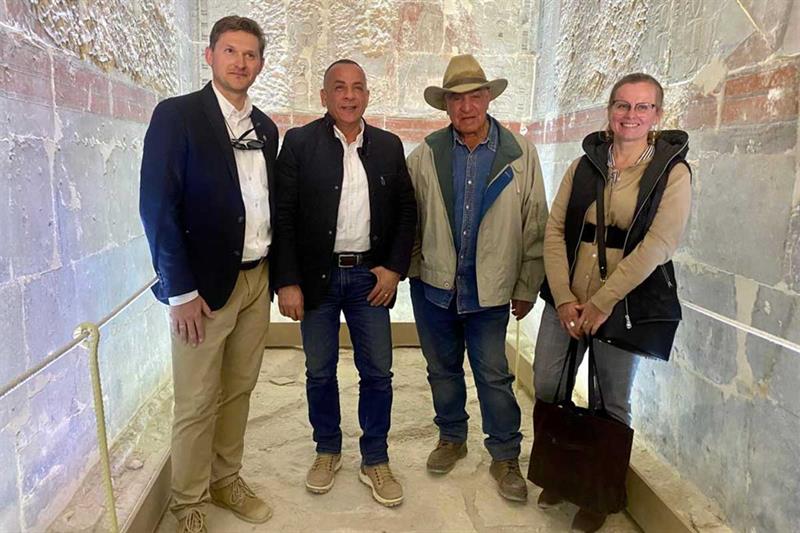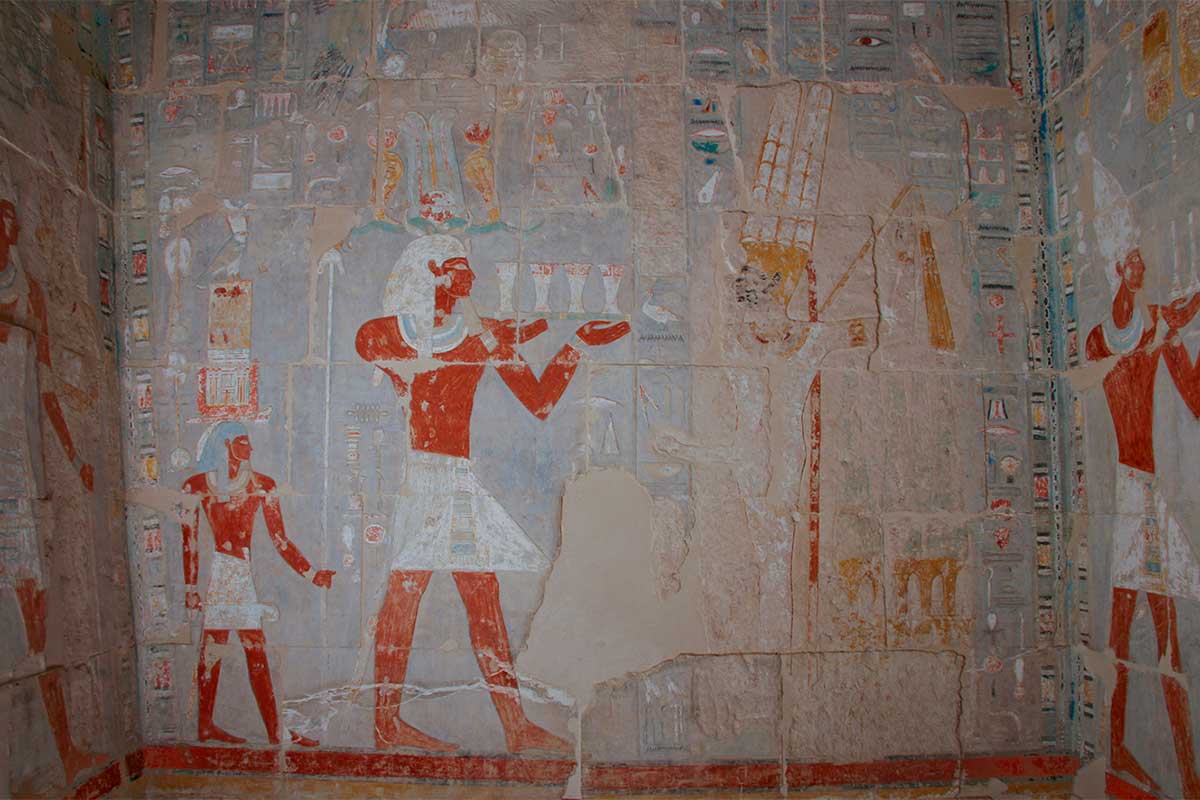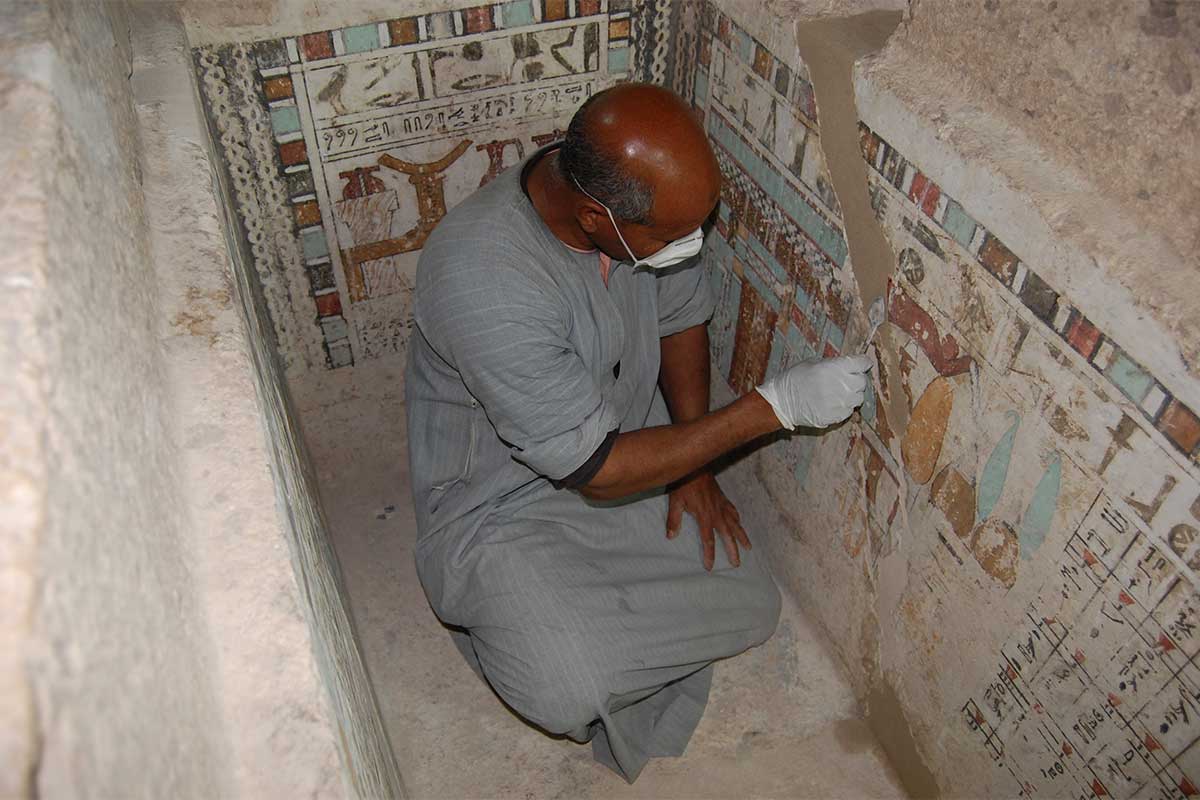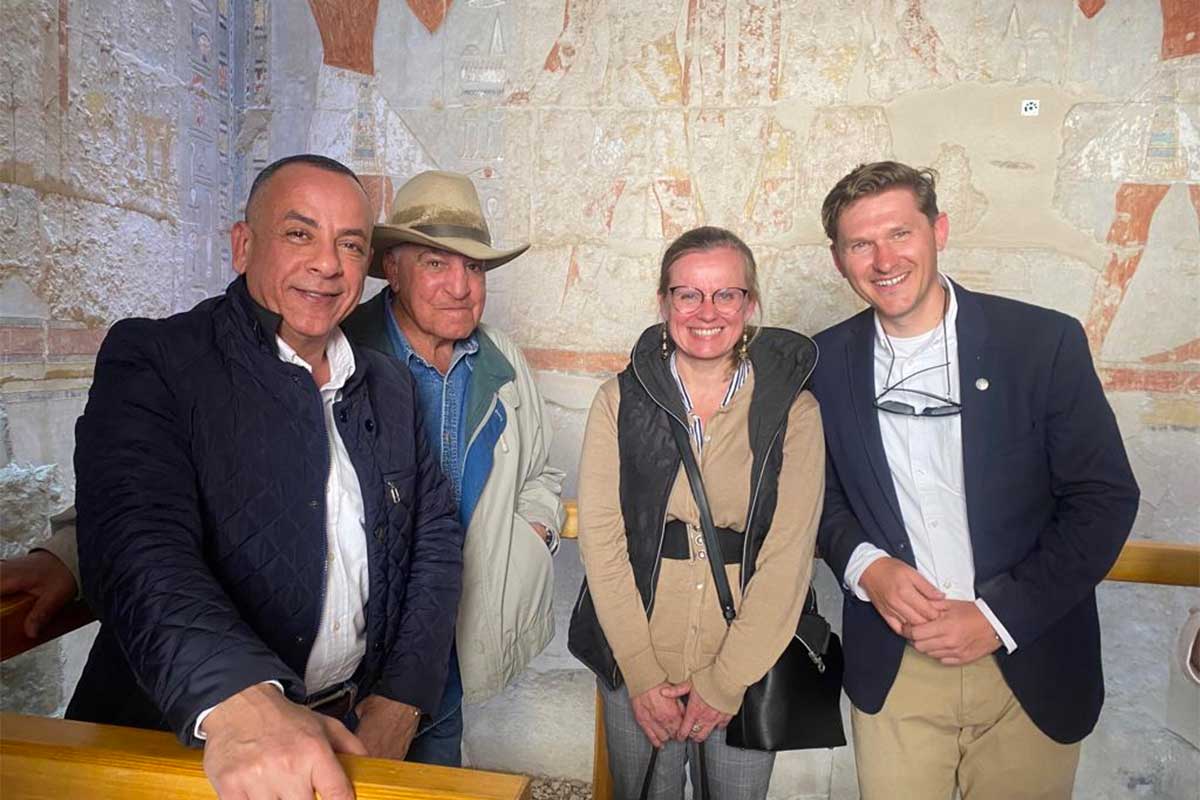Luxor opens new halls at restored Hatshepsut Temple, Tomb of Meru for visitors
Nevine El-Aref , Thursday 9 Feb 2023
The northern and southern rooms of deity Amun Re, located on the Upper Terrace of Hatshepsut Temple in Deir El-Bahari and the Tomb of Meru at the North Asasif necropolis, Luxor's West Bank, are now open to visitors after their restoration.

The rooms were inaugurated by the Secretary-General of the Supreme Council of Antiquities (SCA) Mostafa Waziri and Anna Wodzińska, director of the Polish Centre for Mediterranean Archaeology, University of Warsaw (PCMA UW).
Renowned Egyptologist Zahi Hawass, Fathi Yassin, director-general of antiquities in Upper Egypt, and Patrick Zuwidksy, head of the Polish-Egyptian archaeological mission attended the opening ceremony.
The newly opened rooms at the Temple of Hatshepsut flank the main sanctuary of deity Amun-Re, which was opened to the public in 2017.
"The restoration was carried out by conservators, architects, structural engineers, and Egyptologists from the Polish-Egyptian archaeological and conservation expedition from the PCMA UW and SCA," Waziri pointed out.
As indicated by the themes of the restored wall decorations, the southern room was probably used to store aromatic substances and linen robes used during rituals. The walls of the northern room, of unknown function, depict the offering of sacrifices to Amun-Re by queen Hatshepsut and her ward, king Thutmose III, and some rituals they performed, such as running with an oar.
When Thutmose III ascended to the throne after a period of co-regency, Hatshepsut was removed from the decorations of the temple, Waziri noted.
Wodzińska said that in the least prominent place behind the doors, a figure of engineer Senenmut, Hatshepsut's most eminent courtier, is depicted along with an inscription explaining that the queen allowed his name to be engraved in all the rooms of her temple. "But only in these two rooms he was shown standing rather than kneeling, which may suggest a special function of these rooms."
The Tomb of Meru is a rock-hewn tomb carved in the North Asasif necropolis, an extension of the rock amphitheatre of Deir El-Bahari. Meru was a high-ranking official at the court of the 11th Dynasty king and founder of the Middle Kingdom Mentuhotep II (2055–2004 BCE), who was also buried in North Asasif.
"This is the first site from such an early period in western Thebes to be made accessible to visitors," Yassin said.
The Tomb of Meru faces the procession avenue leading to the temple of king Mentuhotep II. It consists of a facade and a corridor leading to an offering chapel with a niche for a statue of the deceased. Before reaching the chapel, a burial shaft in the floor leads to a corridor descending to a burial chamber with a sarcophagus, he added.
"This is the only decorated room in the tomb, with an unusual decoration in a painting on a base of lime plaster," Yassin noted.
Zuwidksy pointed out that the Tomb of Meru has been known since at least the mid-19th century. In 1996, some wall paintings were cleaned by Italian conservators. From 2015 to 2023, archaeologists from the PCMA UW Asasif Project in cooperation with the SCA worked with conservators from the Academy of Fine Arts in Warsaw on restoring and documenting the tomb.
The Polish-Egyptian mission at the Temple of Hatshepsut in Deir El-Bahari has been operating since 1961. It was established by professor Kazimierz Michalowski, the doyen of Polish Mediterranean archaeology.
For more than 60 years, archaeologists, conservators, and architects have been working on the documentation and reconstruction of the temple's remains.
The Temple of Hatshepsut once served as the Temple of Millions of Years of this queen who ruled Egypt during the 18th Dynasty (ca. 1473-1458 BCE).
The neighbouring necropolis of North Asasif is the burial place of Egypt's most prominent officials from the Middle Kingdom (2055-1773 BCE).




-- Sent from my Linux system.
No comments:
Post a Comment